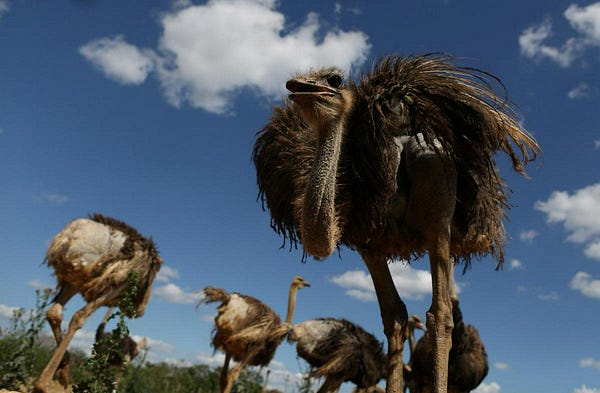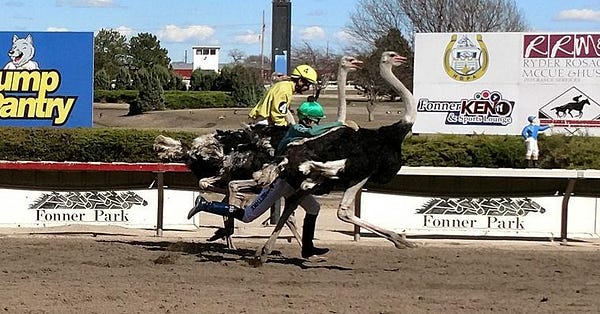TRAGEDY
I’ve been looking for an excuse to write about the cassowary (New Guinea’s ostrich). Unfortunately for Florida cassowary breeder Marvin Hajos, I found one. No less than three faithful readers of Ostrich Weekly sent me the news that Hajos, 75, was murdered by a cassowary. It is believed that Hajos fell down near the bird, which took the opportunity to attack him.
The Southern and Northern cassowaries are the third and fourth-largest birds on the planet (ostrich and Somali ostrich are the top two). Even the “dwarf” cassowary is the ninth-largest bird. They’re also the most dinosaur-ish. In fact, when a new species of dinosaur was discovered in 2017, it was compared to the cassowary. Look at this thing:
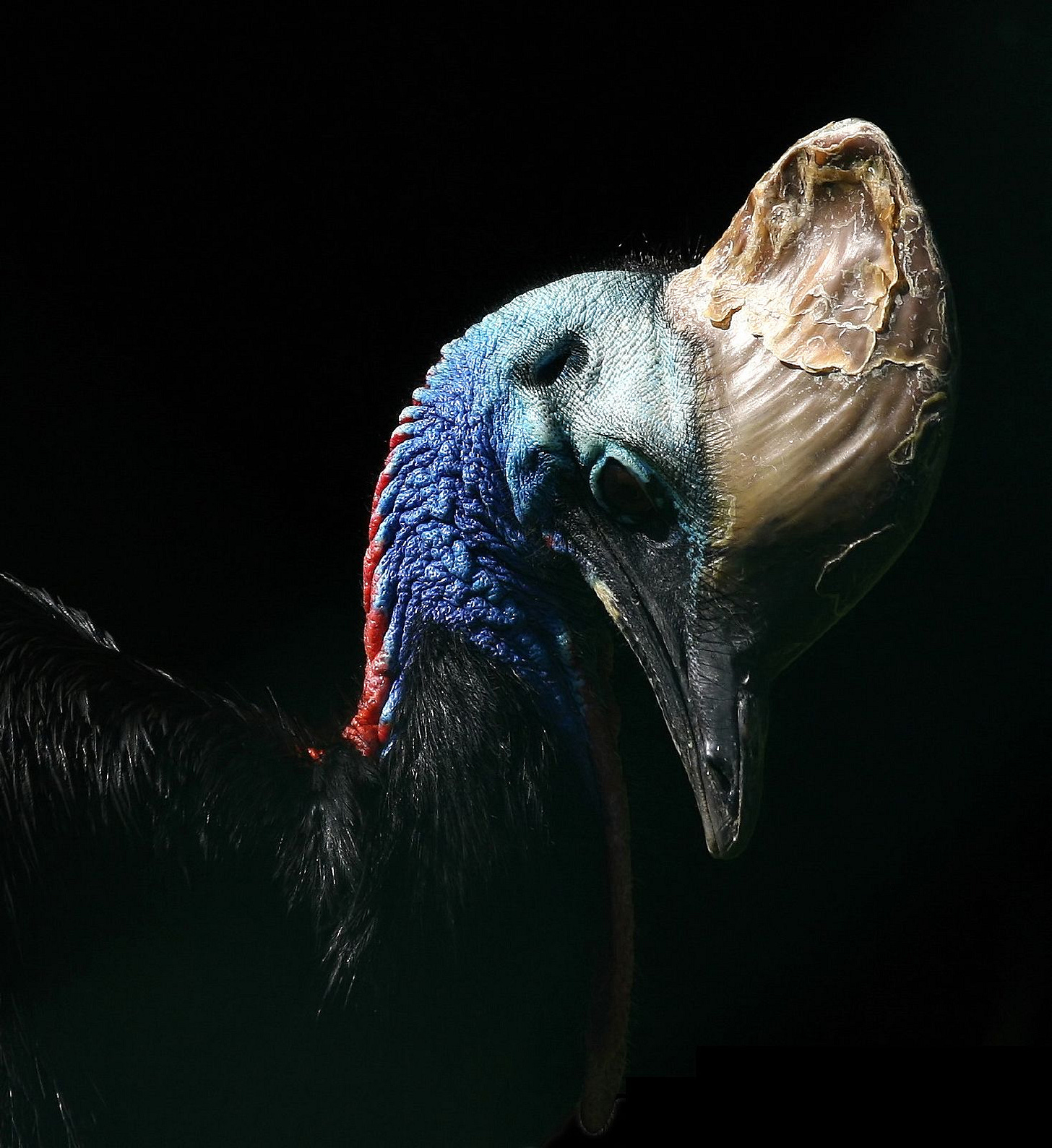
Cassowaries strut around New Guinea and Australia on their big thick legs.
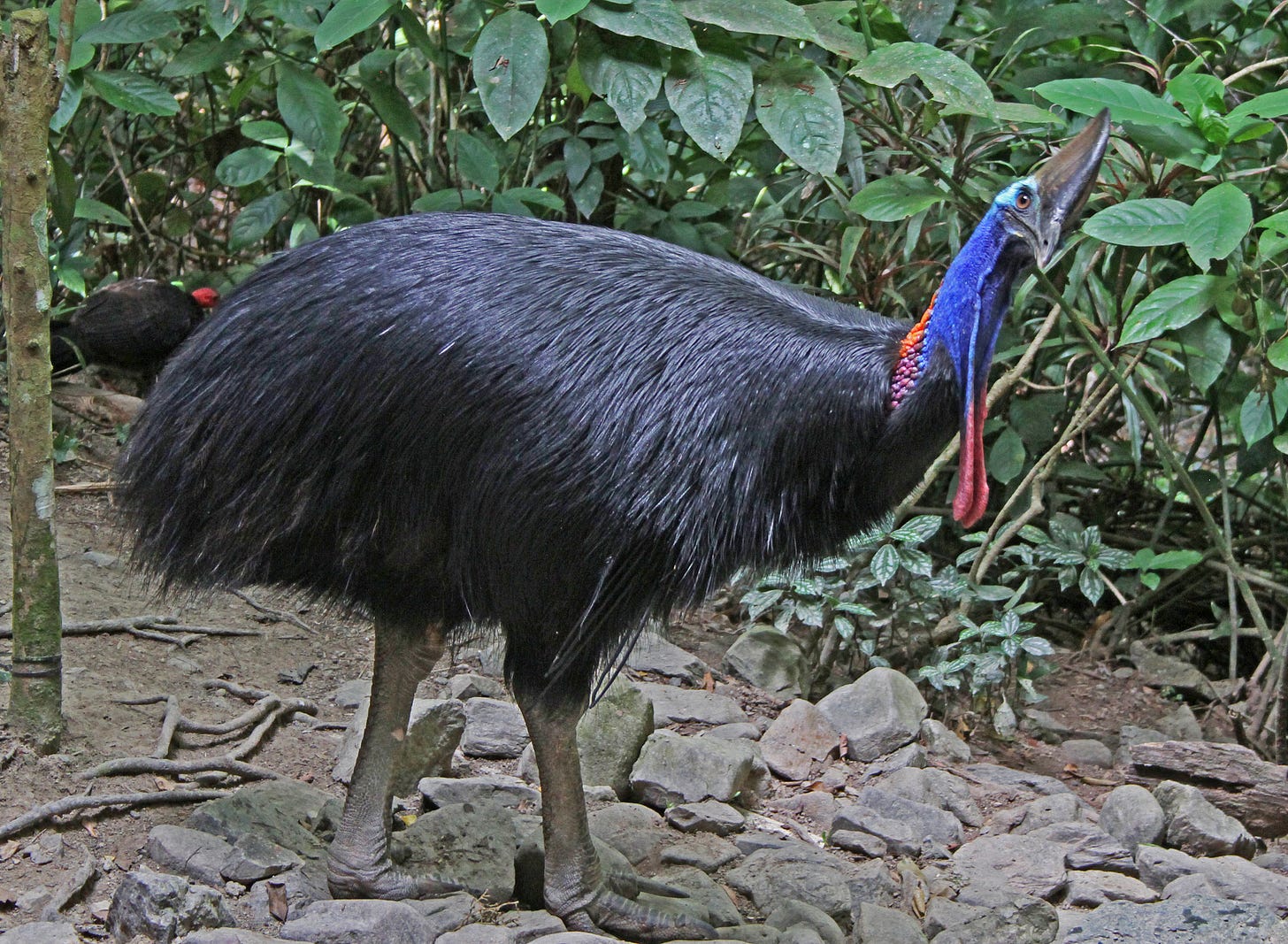
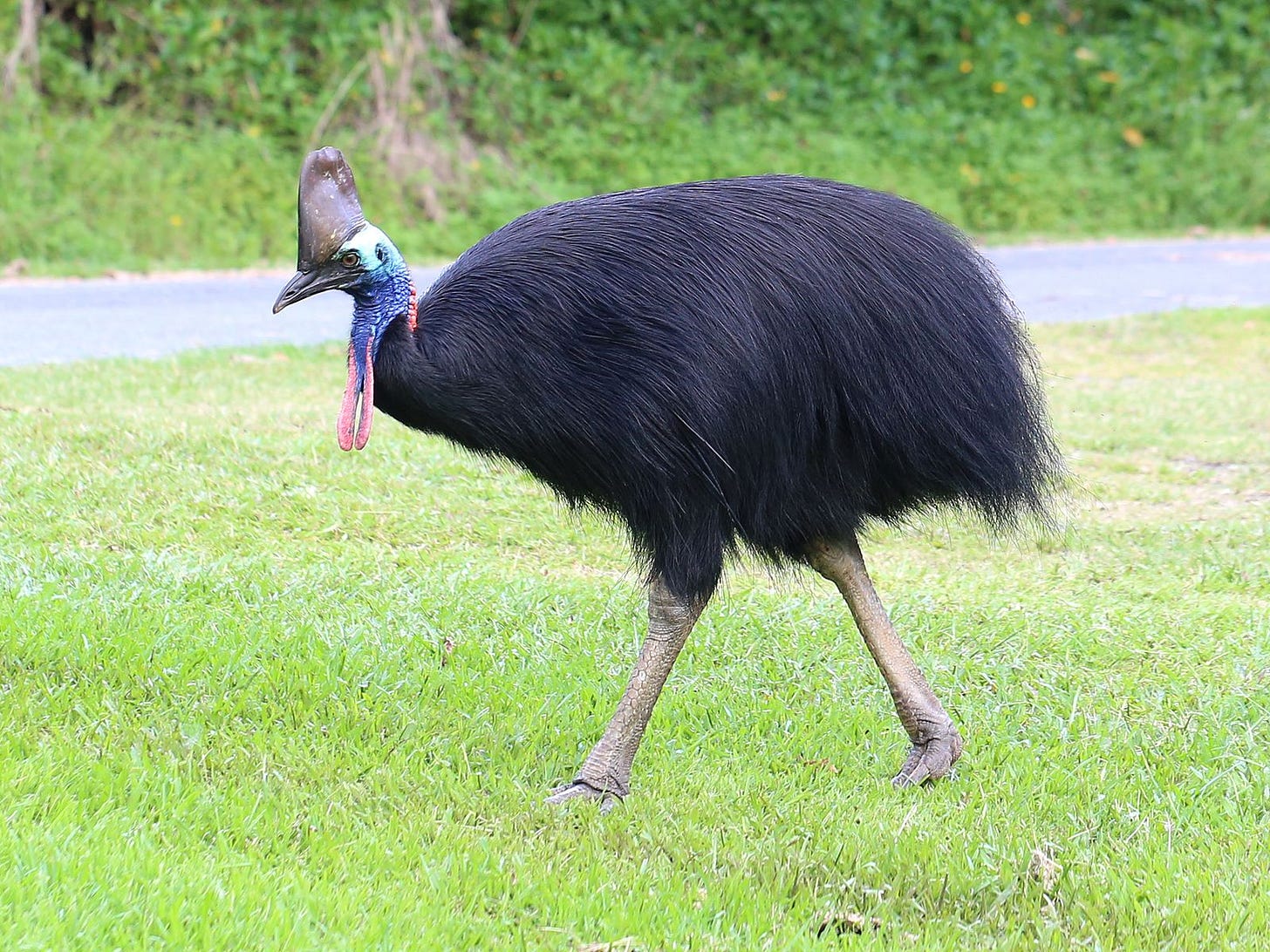
Want a closer look at those feet?


And here’s a Northern Cassowary:
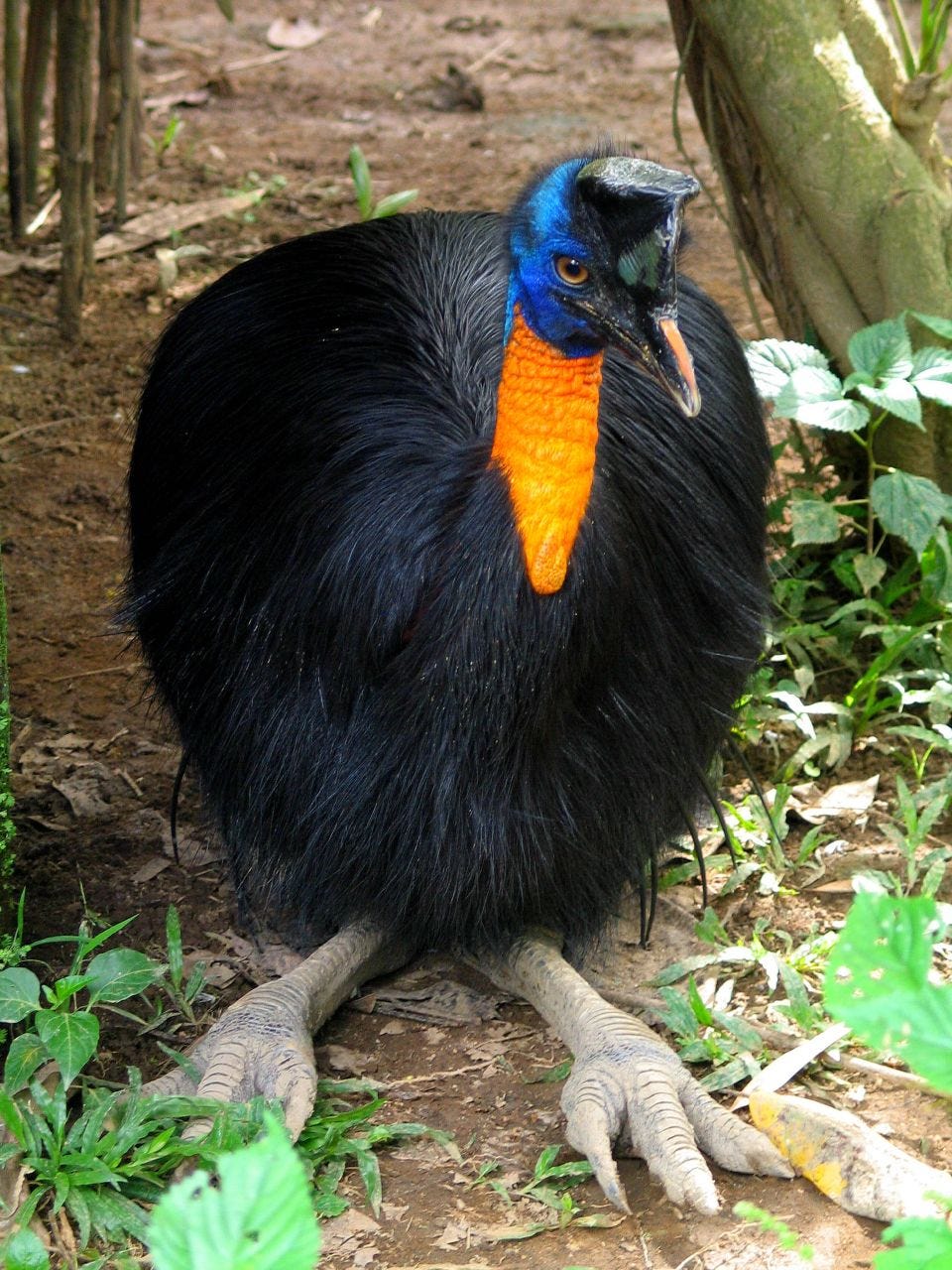
And a Dwarf Cassowary:
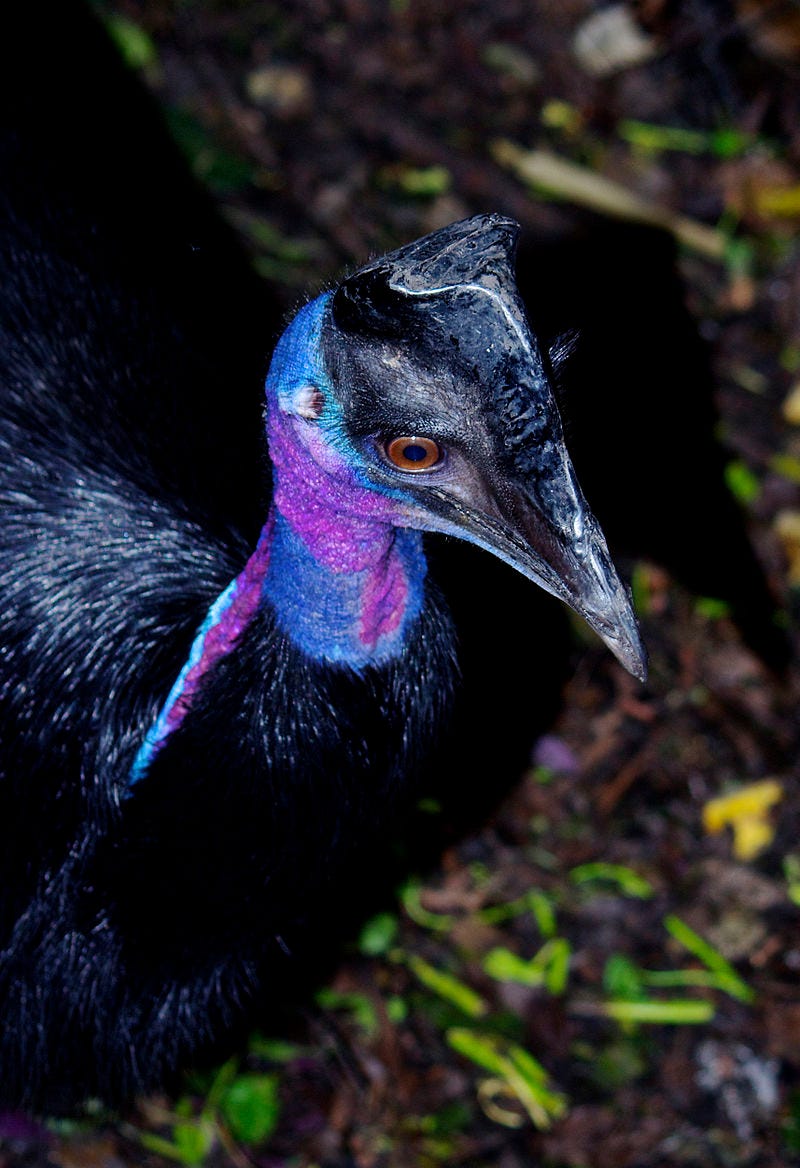
Southern cassowaries average about five and a half feet tall (but can be up to a foot taller than that), jump five to seven feet off the ground, run 30 mph, and weigh 125 pounds. Which means this bird is taller, faster, and heavier than I am. And it can jump higher. Male cassowaries do all the child care (except for laying the eggs), while the female cassowary leaves to find other guys to mate with. LOL.
Even before Hajos’ death, cassowaries were known as the “world’s most dangerous bird,” even though the most recent known incident of a cassowary killing a human was in 1926, which was also the only known cassowary fatality until last Friday. The 1926 fatal attack was similar to what happened to Hajos; the bird attacked a 16-year-old boy who fell in front of him. Ostriches have killed humans much more recently. In 2000, an ostrich killed a 90-year-old man and possibly his 86-year-old wife, too. According to Scientific American, while the cassowary is obviously capable of killing a human, it rarely attacks unless it is provoked. They’re much more dangerous to other animals, like dogs. They do not like dogs, and dogs do not like them.
None of this helps Hajos now, obviously. As for his murderous cassowary, it was reported to be “secured on private property.”
CUBA
Cuba is hoping ostriches will solve its food shortage, according to the Miami Herald. The Cuban government reasons that ostriches are cheaper and easier to farm than cows. Crocodiles and nutria (big water rats) are also being looked into as food sources. Food scarcity has been a problem in Cuba for decade. The island isn’t big enough to produce enough food for its citizens. It used to rely on the Soviet Union for food imports, so when the USSR fell, Cubans starved. The country still imports 60 percent of its food — when it can afford it. And then there’s the record numbers of tourists visiting the island who eat much of the food supply before Cubans have access to it. Think about that the next time you read one of those “foods you HAVE to try in Cuba” articles. You are literally taking food out of other people’s mouths.
It’s nice that the Cuban government is so optimistic about ostriches as a food source, I guess, but they might want to do a little research before they commit. Other countries have done this and failed. Ostriches from failed farms roam the Australian outback. A guy in Arizona lost most of his livestock and his business after the ostriches were frightened by hot air balloons and stampeded themselves to death. Pakistan’s ostrich farms are flailing. Most countries don’t have much of a market for ostrich meat. But maybe ostriches will be the key to Cuba’s food security, unlike everything else it has tried.
RACES
Grand Island, Nebraska, was the place to be last weekend! The Fonner Park race track decided to change things up a bit, ditching the horse races for camel and ostrich races.
Fonner Park’s COO, Christ Kotulak, is a former camel jockey, which apparently is a real profession. He talked up the camels, saying they have a “game face” and also a “game mouth” and are “all business.” And then some animal handler talked about the ostriches, saying “there’s not a whole lot of brain up there so you never know what to expect with these guys.” RUDE.
The event was a big success, with Fonner Park filled to capacity, according to The Grand Island Independent, which was clearly thrilled to have something newsworthy happen in town. I mean, I’m looking at its front page right now and the top story is that a child won an egg drop contest.
Kotulak said he knew all along that the races would be a big draw, smugly telling The Independent “I expected this crowd.” Everyone expected this crowd. Ostrich races are awesome and it was perfect ostrich-racing-watching weather.
But it wasn’t all sunshine and rainbows. Another Independent article about the event said the ostrich race ended in controversy. It was a photo finish — the photo itself is above — but the winning jockey, Seth Bethke, wasn’t on the ostrich when it crossed the line. He was running alongside it. Frank Johnson, still seated on his bird, took second place. He obviously should have been declared the winner, but Seth Bethke is a cheater and has no honor.
As for the other three ostriches in the race, the Independent said they never made it to the finish line. I found some footage of the race if you want to have a look.
OSTRICH MULTIMEDIA OF THE WEEK
The cassowary’s call sounds more like a belching alligator (or a dinosaur????) than a bird.
Special bonus cassowary footage!
This issue of Ostrich Weekly is dedicated to the memory of Marvin Hajos (1943-2019).




